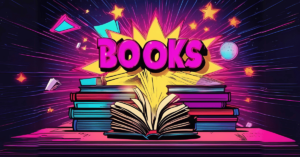Beyond the Blurb: Crafting Captivating Descriptions that Sell Your Book
Your book is your masterpiece, but in the crowded world of publishing, how do you entice readers to pick it up from a digital shelf or bookstore display? The answer lies in your captivating book descriptions, the crucial first impression that can make or break your sales. It’s not just about summarizing the plot; it’s about igniting curiosity, sparking emotions, and promising an unforgettable experience.
Table of Contents

The Art of Captivating Book Descriptions
1. Hook ’em with Strong Verbs: Ditch the passive voice and generic phrases. Instead, paint a vivid picture with action verbs that transport readers into your story. Instead of “She traveled to a mysterious island,” try “Storm-tossed waves crashed against the jagged cliffs as Amara stumbled onto the mist-shrouded shores of Aethel.”
2. Master the Emotional Hook: Tap into universal human emotions like love, fear, hope, or curiosity. What will your book make readers feel? Highlight that emotional core in your description. For example: “Love can conquer all, but can it survive the secrets buried beneath the sands of time?”
3. Embrace Genre Tropes (But Twist Them): Readers often gravitate toward familiar elements within their preferred genres. Acknowledge your book’s genre tropes, but add a unique twist to pique their interest. “He’s the stoic detective with a haunted past. She’s the fiery redhead with a hidden agenda. Together, they’ll face a conspiracy that shatters everything they thought they knew in a noir thriller unlike any you’ve read.”
4. Show, Don’t Tell: Instead of simply stating facts, paint a sensory picture that immerses readers in your world. “The acrid scent of smoke choked the air, mingling with the desperate cries of the trapped villagers. Anya gripped her sword, the weight of a kingdom’s fate on her young shoulders.”
5. Keep it Concise and Compelling: Aim for 150-250 words, ensuring every sentence is essential. Leave readers wanting more, not overwhelmed by details.
Examples of Well-Written Descriptions
Mystery: “A reclusive billionaire found dead in his locked mansion. A cunning detective with a troubled past. A web of secrets that stretches across continents. Can Detective Riley Pierce unmask the killer before another life is taken?” (Strong verbs, emotional hook, genre trope, sensory details)
Romance: “He’s a cynical workaholic who swore off love. She’s a free-spirited artist who crashes into his world. Sparks fly, but can they bridge the chasm between their different lives? Find out in this heartwarming tale of second chances and finding love where you least expect it.” (Emotional hook, character contrast, genre trope)
Sci-Fi: “On a dying Earth, humanity clings to survival in domed cities. But when a young scavenger discovers a hidden message from beyond the wasteland, he embarks on a perilous journey that could change the fate of his world. Join Kai on a thrilling adventure packed with action, suspense, and the fight for a brighter future.” (Focus on stakes, genre trope, emotional hook)
Remember: Crafting a captivating description is an art. Experiment, read successful examples, and believe in your story. Let your passion shine through, and watch your book description transform from a blurb into a sales magnet.
Bonus Tip: Don’t forget to tailor your description to the specific platforms where it will be displayed (e.g., online retailers, Goodreads). Each platform has character limits and specific needs, so adjust accordingly.
By following these tips and unleashing your creative voice, you can craft a book description that grabs readers by the heart and compels them to dive into your captivating world. Happy writing!






